Inaugural SoMaT Graduate School session held in Tokyo
The inaugural SoMaT Graduate School session was held in Tokyo for five days from September 30 to October 4. Science Tokyo’s* Kayoko Nohara Laboratory / Xinru Zhu Laboratory (Nohara Lab) from the School of Environment and Society hosted the program in collaboration with the Norwegian University of Science and Technology (NTNU), Korea Advanced Institute of Science and Technology (KAIST), Tsinghua University, and Chinese Academy of Science and Technology. Thirty graduate students from the five universities participated.
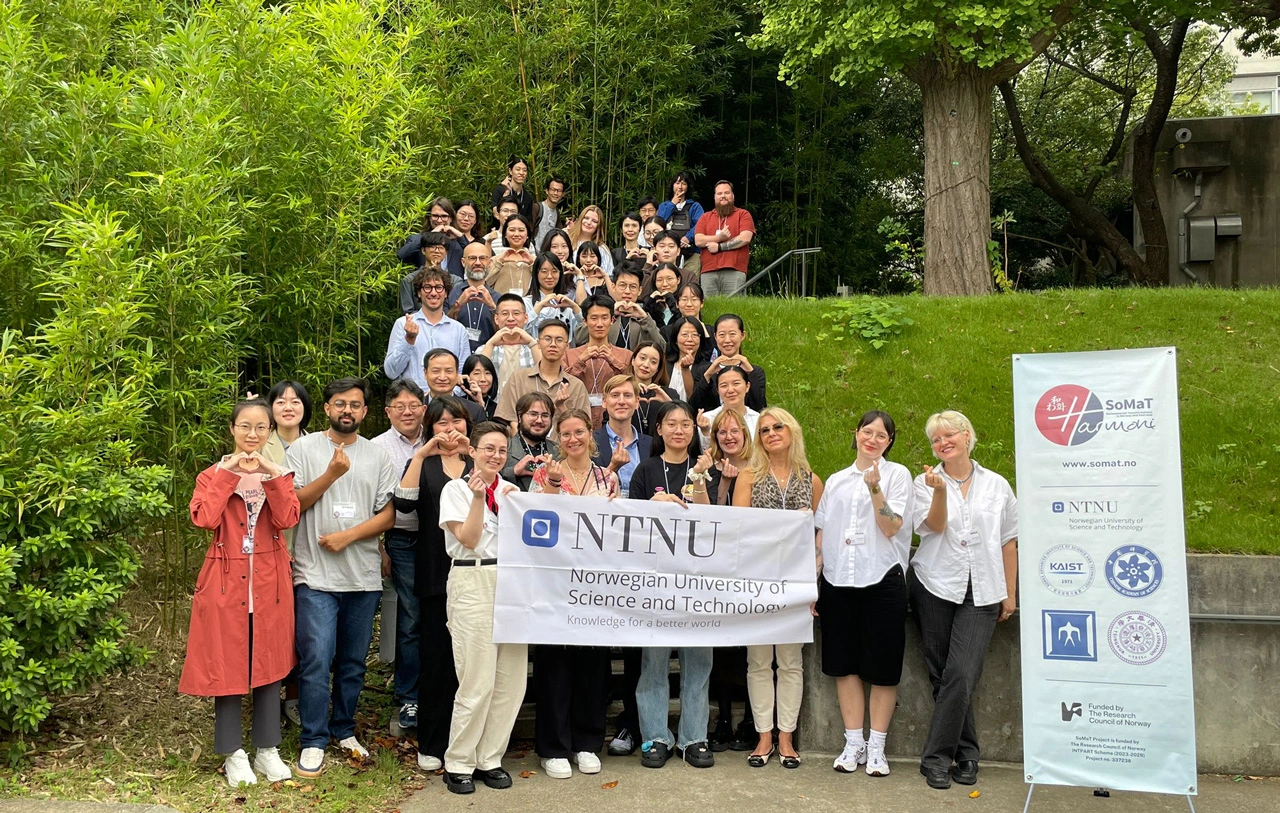
Sociomaterial Transformation in Norway and East Asia (SoMaT) is a five-year project managed by NTNU and funded by the Research Council of Norway. The project investigates sociomaterial transformations in Norway and East Asia from a humanities-based science and technology studies (STS) framework on three thematic areas: sustainability, digitalization, and diversity. Participating students and professors have been sharing their research online for some time. As part of the SoMaT activities, masters and doctoral students from the five participating universities will gather to hold a rotating Graduate School each year. This year’s Graduate School, the first year of the program, was held in Tokyo and was managed by the Nohara Lab in cooperation with NTNU.
Five-day program of SoMaT Graduate School
The SoMaT Graduate School in Tokyo took place from September 30 to October 4. Approximately 30 master’s and doctoral students from five universities in Norway, China, Japan, and South Korea gathered in Tokyo to gain new insights on sustainability, digitalization, and diversity through fieldwork and discussions.
Day 1
Day 1 was held at Midorigaoka Hall on Science Tokyo’s Ookayama Campus. In the morning, NTNU faculty members delivered a lecture and shared an overview of their institution. Professor Kayoko Nohara introduced Science Tokyo and gave a lecture on language translation as a key framework for examining social transformation, after which everyone had lunch at Tsubame Terrace, the new cafeteria on Ookayama Campus.
The afternoon began with a lecture on how to enjoy and create haiku poems by Institute for Liberal Arts and Academy for Leadership Professor Lorinda Kiyama. The participating students would later write and read haikus based on their experiences during the fieldwork scheduled for the second day of the program.
After this, group work began. The students had previously been assigned to one of five groups based on their home institution, specialization, and level of study, and they were finally able to meet their group members. As an ice-breaking activity, the students made as large a structure as possible using pasta. After the groups had warmed up, they received guidance on the assignments to be completed on the second day. Ryota Ishii, a researcher from the Nohara Lab, explained the places to visit for fieldwork. The five sites to be researched by each group were chosen from institutions and organizations in and around Tokyo that fit the themes of sustainability, digitalization, and diversity. Each group consisted of six people — five master’s program students and one doctoral student, who often took the lead in discussing interviews and other research planned by each group. The content-filled day ended with various small Japanese dishes being served to participants at Midorigaoka Hall.
Day 2
The second day was all about fieldwork. The five destinations that welcomed the SoMaT participants were:
- a satoyama, a natural environment between the mountain foothills and arable land, in Kamanuma, Chiba Prefecture, where Professor Yoshiharu Tsukamoto of the School of Environment and Society is involved
- Shibuya River Renaissance, an NPO in the heart of Tokyo
- Bonus Track, a cluster of shops in a small courtyard in Tokyo’s Shimokitazawa
- the roof-top garden of the Rise Shopping Center in Tokyo’s Futakotamagawa
- the Tokyo waterfront area, including the Daigo Fukuryu-Maru Exhibition Hall, the home of a wooden tuna fishing boat built in 1947
In each of the five groups, students from the Nohara Lab also provided support at each site, including interpreting, escorting, and taking photos. The participating students actively engaged in research, listening to the information shared by their hosts and eagerly asking questions, conducting interviews with other visitors, and taking videos.
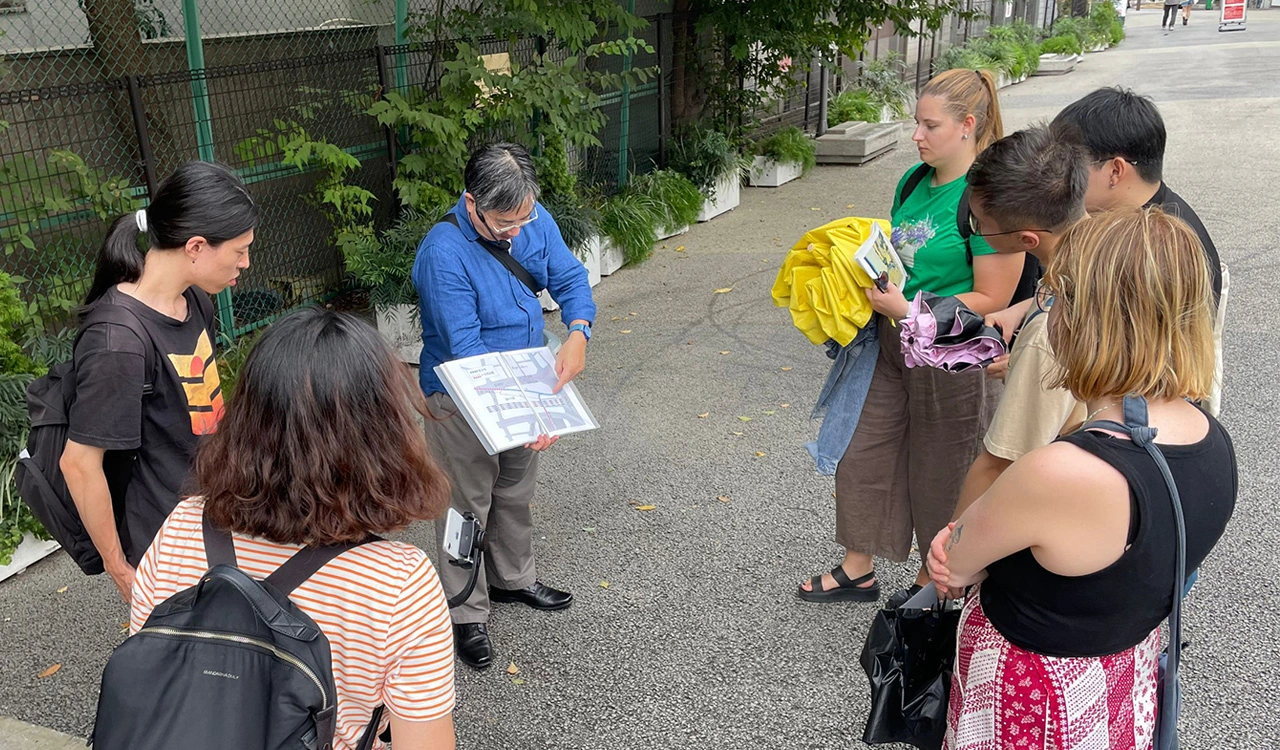
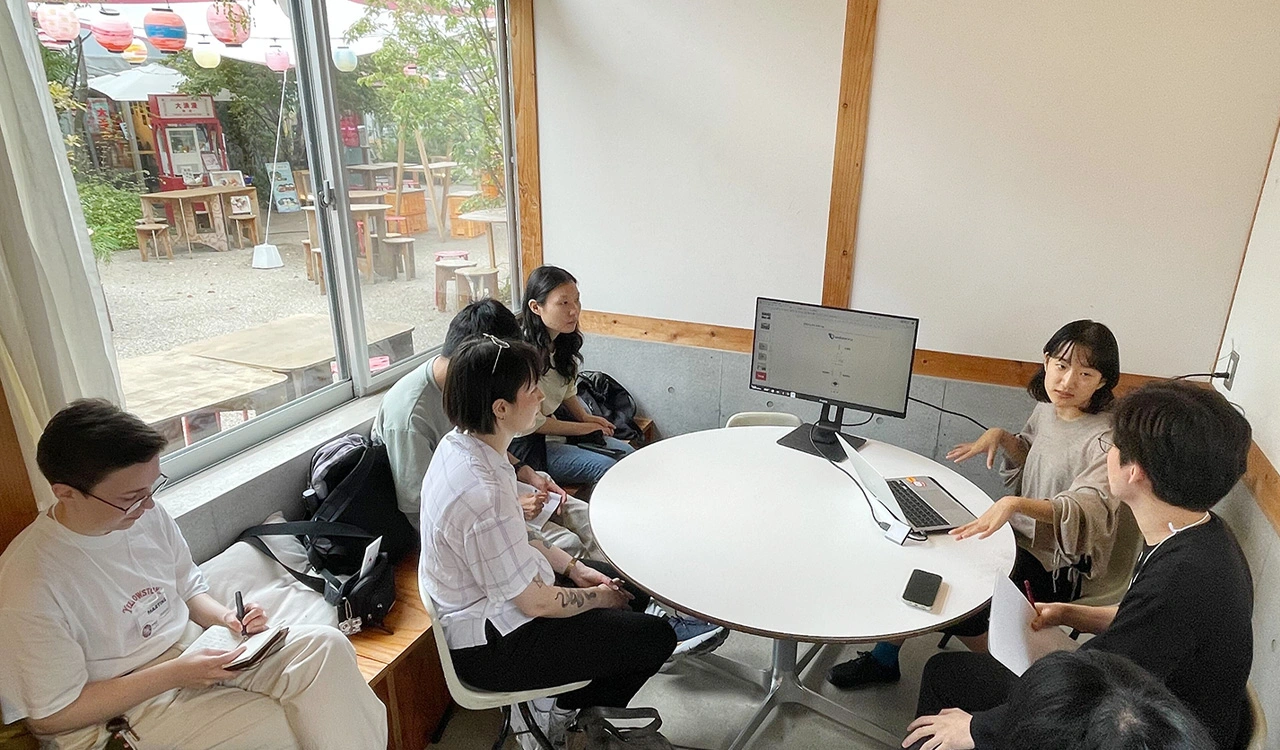

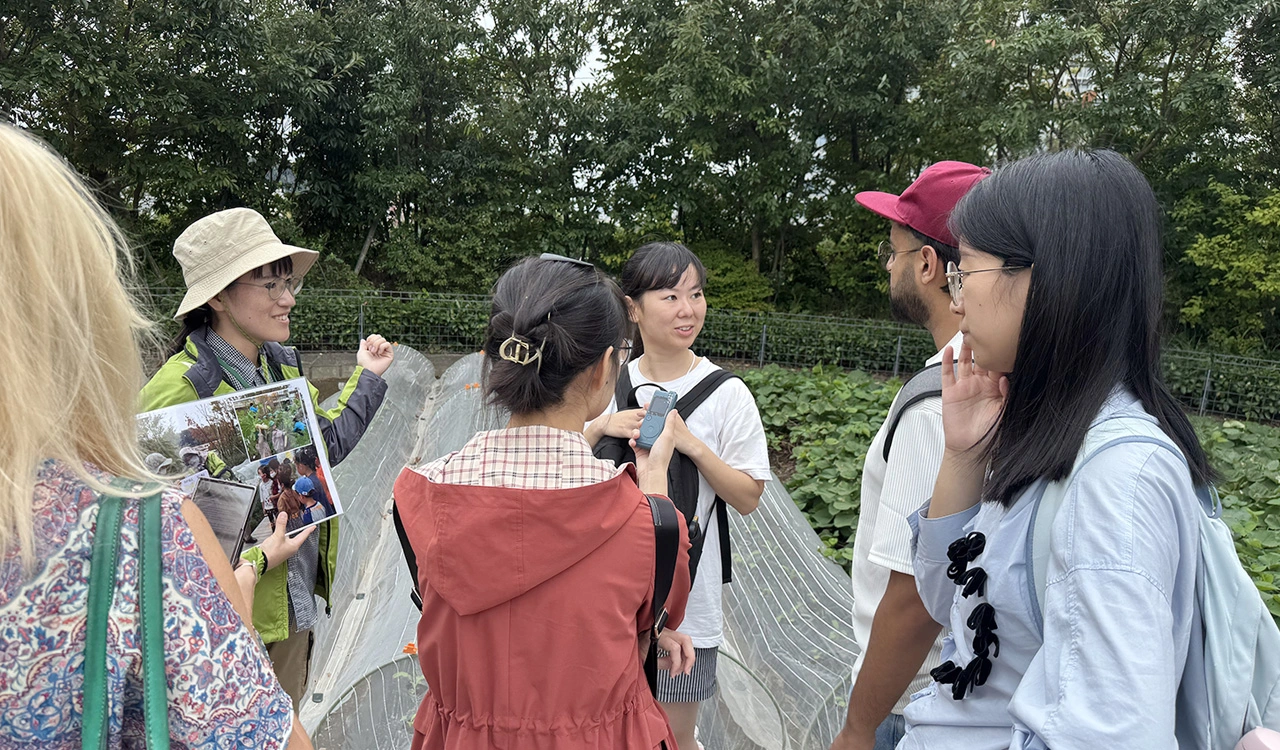
Day 3
On Day 3, participants returned to Midorigaoka Hall, where lectures and group work continued. Lectures were given by professors from four East Asian universities on various topics such as STS, the philosophy of science, and media theory. Science Tokyo’s Professor Masashi Shirabe of the Institute for Liberal Arts gave a lecture on the responsibilities of scientists using Minamata disease as a case study. Nohara provided a lecture on the interaction between different things from the perspective of translation studies, and also shared her expectations regarding this school of thought. Participants spent the rest of the time on group work, organizing what they had learned on Day 2 and planning their presentations.

Day 4
On Day 4, the groups moved to Shibuya QWS, where five doctoral students shared information on their research methods with the participating master’s students.
Professor Shinobu Yume Yamaguchi, director of the United Nations University’s Institute for the Advanced Study of Sustainability (UNU-IAS), also gave a lecture. She spoke about the organization and research activities of United Nations University, but also shared an interactive quiz that helped the audience recognize the global-scale issues targeted by the United Nations. Yamaguchi has been involved in research and practice in the field of international cooperation, including education and ICT, and the use of science and technology for the preservation of world heritage sites. In the past, she was a professor at the former Tokyo Institute of Technology’s Global Scientific Information and Computing Center.
The participants used the rest of the time on Day 4 to finish up their presentation posters summarizing their research, findings, and reflections on the places they visited during their fieldwork.
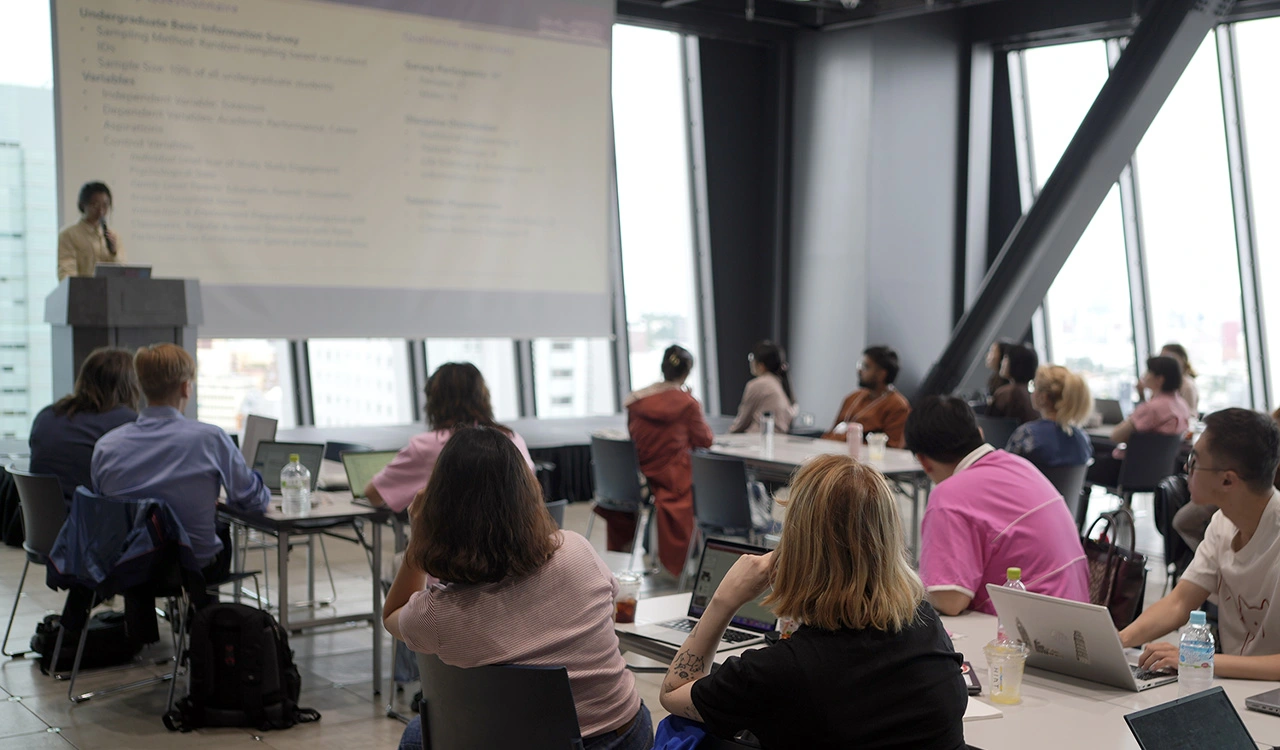
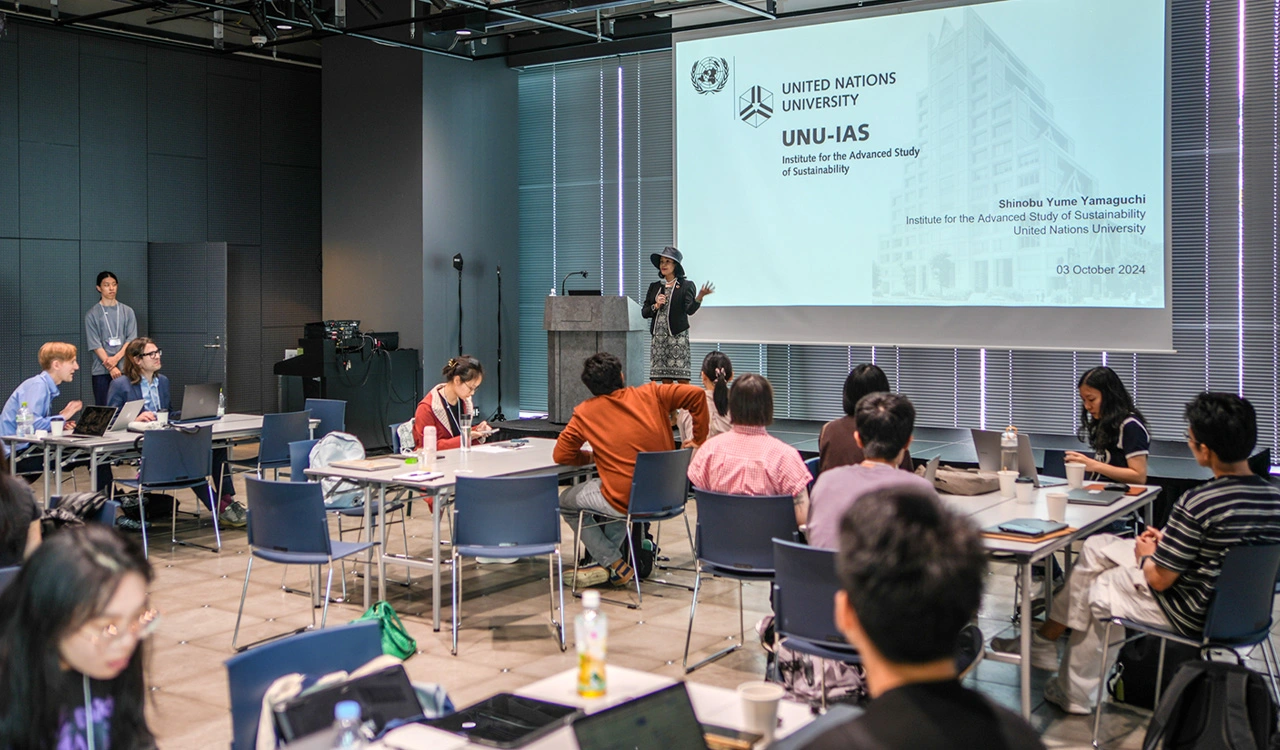
Day 5
Day 5 was all about student presentations to wrap up this intensive five-day program. As on the previous day, the venue was Shibuya QWS, which included an open area where all users of Shibuya QWS could participate in the presentations and talks, and examine the posters created by the student groups.
Guests included members of the NPO Shibuya River Renaissance, members of Yoshiharu Tsukamoto’s laboratory who cooperated in the fieldwork, Science Tokyo’s Professor Shirabe, and members of the Norwegian Research Council, the main supporters of the SoMaT Graduate School.
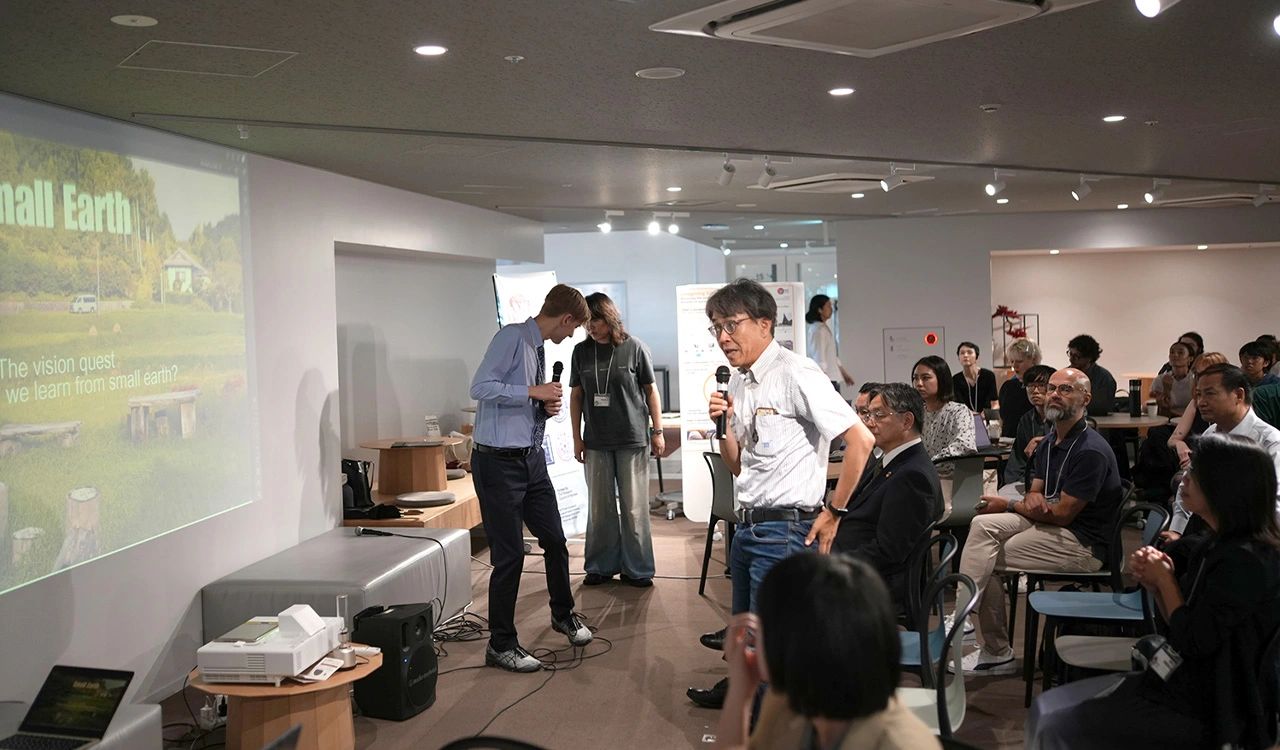
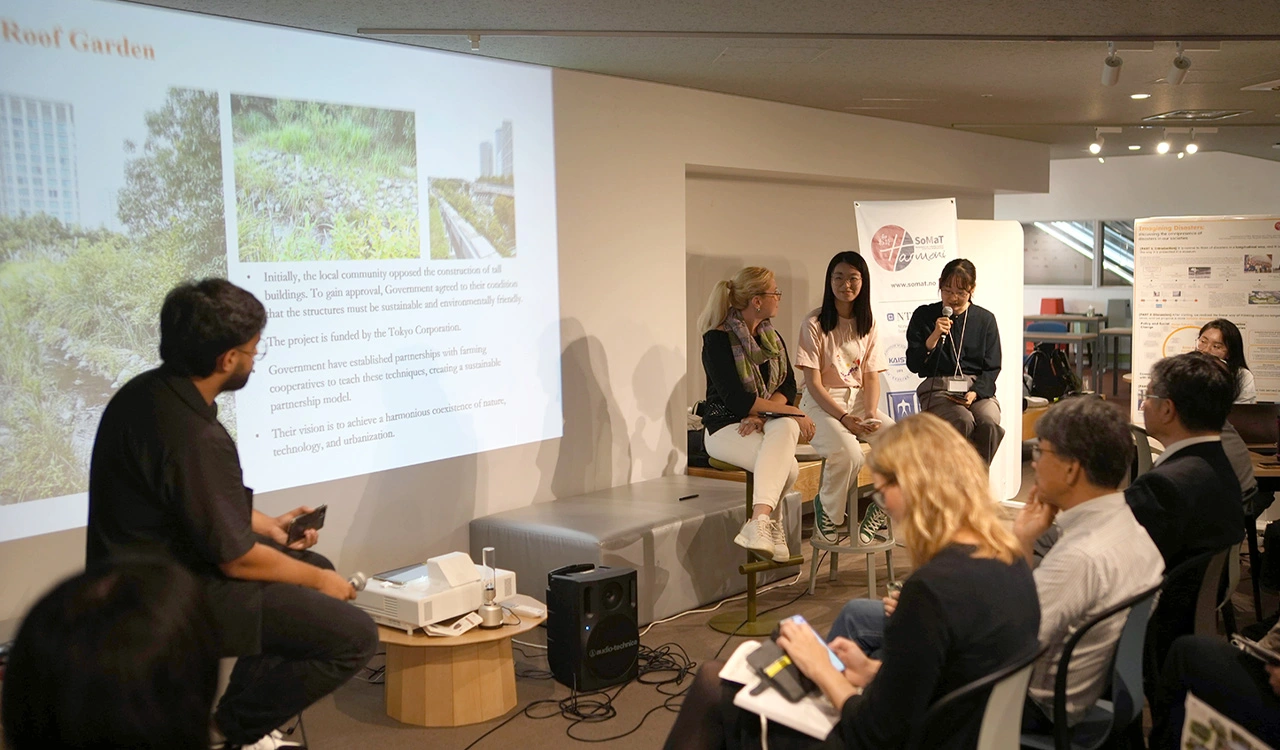
The student presentations were rich in individuality, using not only slides but also videos and TV-style interviews. The groups shared their findings in a clear manner, allowing all audience members to understand their experiences. After each presentation, attendees asked questions and continued to discuss the issues and proposed actions. After the presentations, SoMaT students were awarded certificates of completion.
In addition, cards were distributed to the students with the haiku they had written on Day 2 in the language of their choice. The cards, printed with the submitted haiku on the front and the Japanese version on the back, were created by the students and faculty staff of the Nohara Lab. Several professors also wrote haiku, and three copies were printed for exchange among SoMaT members. These haikus will surely serve as a memory of the SoMaT Graduate School in Tokyo and the friends made along the way.
Finally, the students and organizers enjoyed a networking lunch with all participants, including the guests. Toasts were made in Japanese, Chinese, Korean, and Norwegian, and the participating students, all now close friends, took pictures with each other and exchanged souvenirs.
Comments from participating Science Tokyo students
Zhou Tianshuo
1st-year master’s student, Transdisciplinary Science and Engineering
In this SoMaT event, we had the opportunity to engage in lectures and group work with top-level professors and talented students from around the world, gaining insights that go beyond what is typically learned in regular lectures. Additionally, it was a great experience for strengthening intercultural understanding. I am grateful and happy to
have made such wonderful connections.
Tomomi Okutsu
2nd-year master’s student, Transdisciplinary Science and Engineering
Attending this SoMaT Graduate School was such a wonderful experience for me. I truly learned a lot from inspiring professors and students with diverse backgrounds, which broadened my perspective in many ways. It also gave me valuable insights into fostering better collaboration as a team. I am also grateful to have made new friendships! Many thanks for giving me such an incredible opportunity.
Yu Yanghong
1st-year doctoral student, Mathematical and Computing Science
The event provided an excellent platform for me to explore new ideas, gain knowledge, and make new connections. I learned much from different researchers, and we became good friends. Everyone here is very friendly and responsible. We did have a wonderful time together. I would say it was one of the best events I have ever attended.
Comments from SoMaT Graduate School coordinator
Researcher Ryota Ishii
Nohara Lab
It was my role to select and negotiate for the fieldwork sites, which were carefully chosen in line with the SoMaT theme, but I was always unsure whether each site would provide a meaningful learning opportunity for the participating students. However, the students proactively researched, studied deeply, and engaged in lively discussions. I was surprised by their active approach. While listening to their presentations, I was amazed at the talent of the students.
I participated in one of the fieldwork sites, walking along the traces of the culverted Shibuya River and supporting the opportunity to think about the coexistence of urban life and nature. After the session, I was invited to lunch with the group and we had many discussions. I also became very friendly with one of the doctoral students at Tsinghua University. On the last day of the program, he wrote a message on a Tsinghua University postcard and presented it to me. As is expected of a Tsinghua University student, the message was accompanied by a traditional poem. Since I had just finished my master’s degree and my age fits that of the participating students, I was able to be in close contact with the students of the Shibuya River Group. I received a warm thank-you message at the end of the session, and I was able to finish the program feeling glad to have been involved.
- Tokyo Medical and Dental University and Tokyo Institute of Technology merged to form Institute of Science Tokyo on October 1, 2024.
Related articles
Update history
- Contact email address was updated on April 9, 2025.
Contact
Nohara and Zhu Lab
Ryota Ishii
Email ishii.r.7a38@m.isct.ac.jp